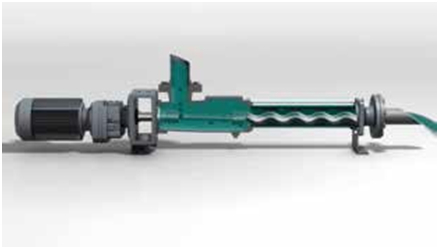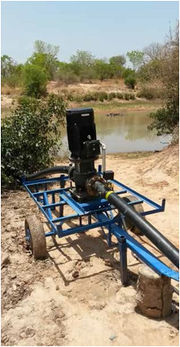Knowledge fuels change
For over a decade, Energypedia has shared free, reliable energy expertise with the world.
We’re now facing a serious funding gap.
Help keep this platform alive — your donation, big or small, truly matters!
Thank you for your support
SPIS Toolbox - Water Pump

Introduction
Do want to know all about SPIS – Solar Powered Irrigation System : Please go to the newly launched standalone Solar Powered Irrigation Systems (SPIS) website (www.spis-toolbox.org) , featuring three SPIS toolbox:
- Toolbox for beginners,
- Toolbox for farmers (new SPIS Web based App – to calculate design of the pumps),
- the Toolbox for experts - the updated version - Version 6
and additional resources (Publication about SPIS).
The Toolbox on Solar Powered Irrigation Systems (SPIS) is designed to enable advisors, service providers and practitioners in the field of solar irrigation to provide broad hands-on guidance to end-users, policy-makers and financiers. Risks related to system efficiency, financial viability and the unsustainable use of water resources can thus be minimized. The Toolbox comprises informative modules supplemented with user-friendly software tools (calculations sheets, checklists, guidelines). read more
Modules and tools touch upon:
- assessing the water requirements,
- comparing the financial viability,
- determining farm profitability and payback of investment in SPIS,
- sustainably design and maintain a SPIS,
- highlight critical workmanship quality aspects,
- and many more.

Water Pump
Depending on the water source, there are two different possibilities for pump installation – submersible or surface. Surface pumps are often installed next to the water source and suck water up on one side before “pushing” it away on the other side of the pump. Surface pumps can pump water up from a maximum depth of six meters. Submersible pumps are installed under water in wells and boreholes and “push up” the water.
Submersible pumps are installed at depths ranging from 10 to 120 meters. Using control switches (such as float switches in water tanks and wells), submersible pumps can be operated in automatic mode. In contrast, surface mounted pumps usually require the attendance of an operator who regularly checks the surface pump’s priming behavior. Use of primary chambers and non-return valves can prevent loss of prime, but are not very reliable in practice. Therefore, surface pumps are considered to be less reliable than submersible pumps.
Solar water pumps are generally constructed from non-corrosive stainless steel and are designed to pump clean water without any solid sand fibers. The lifetime of a submersible motor pump strongly depends on the water and installation quality. If the pump is installed in a drilled well with a proper well casing (and thus reduced sediment intrusion), submersible pumps may reach lifetimes between 7–10 years. In very poorly constructed wells and boreholes with high sediment content, the hydraulic part of the water pump may have to be replaced after 2–3 years. In order to secure a safe system operation, two safety means are necessary:
- a water level sensor installed in the storage tank that switches off the pump in order to avoid overflow;
- a second water level sensor installed towards the base of the well to avoid dry running of the pump.
There are two types of pumps to be typically found in today’s solar pumping systems: centrifugal and helical rotor pumps.
Centrifugal pump
|
A centrifugal pump creates an increase in pressure by transferring mechanical energy from the motor to the fluid through the rotating impeller. The fluid flows through the inlet to the impeller center and out along its blades. The centrifugal force increases the fluid velocity and consequently the kinetic energy is transformed to pressure. The pressure can be increased by simply adding several stages in series. Centrifugal pumps are generally utilized where pumping heads are low and water demand is high. For this reason centrifugal pumps are the preferred option for use in irrigation systems. |
File:CentPump.jpg Centrifugal pump (Source:Grundfos, 2014) |
Helical Rotor Pump
A helical rotor pump is a type of progressive cavity pump that works by the rotation of a helical rotor when sealed against a helix wall, pushing discrete sections of material through the device.
This corkscrew-like action provides a pulse-free flow, and valves are not required as the helical rotor seals the discrete sections of material. The flow rate is determined by the rotor speed and is independent of outlet pressure. Helical rotor pumps are typically found in applications with high pumping heads and low water flow rates, such as for drinking water supply.





















